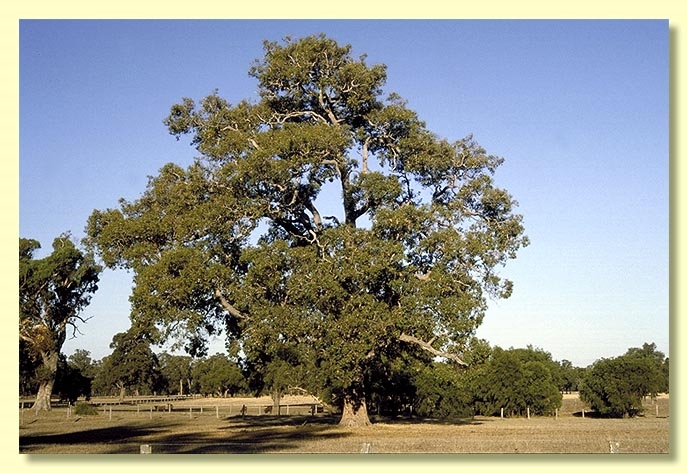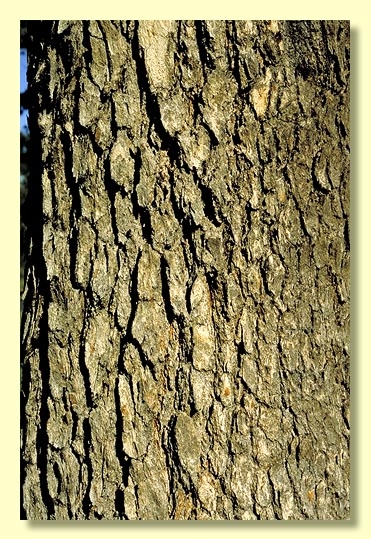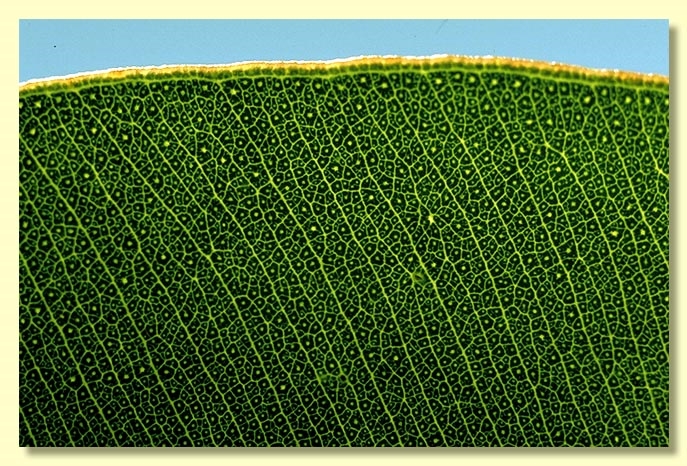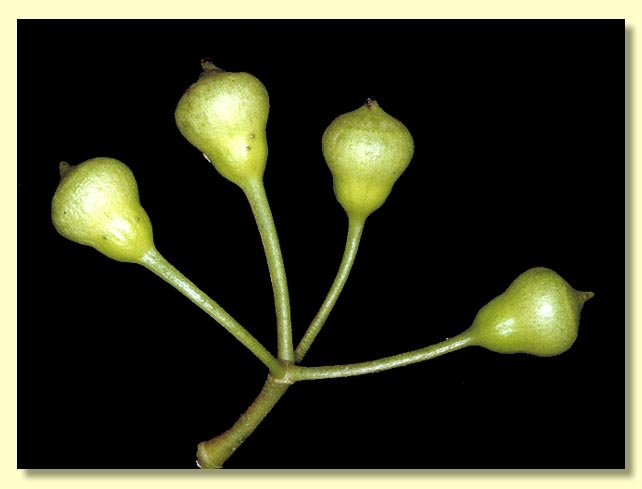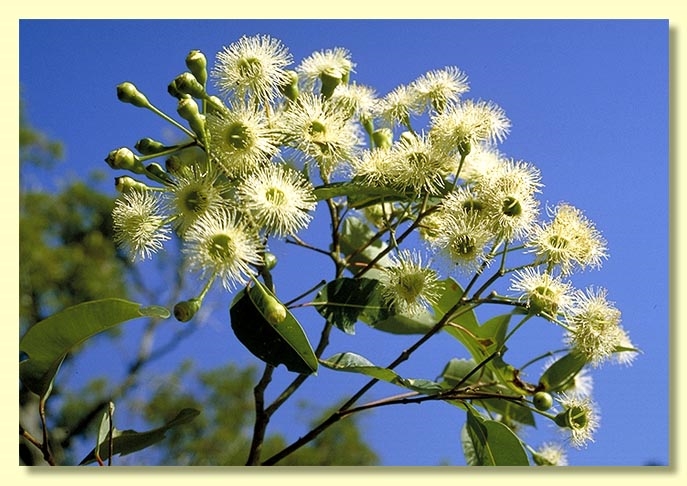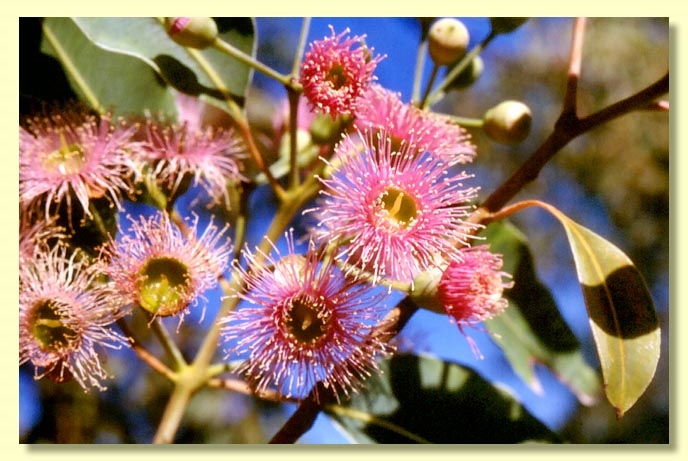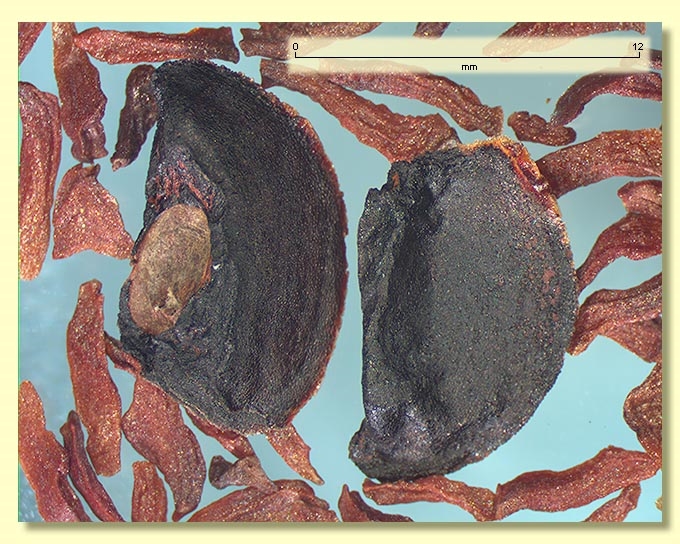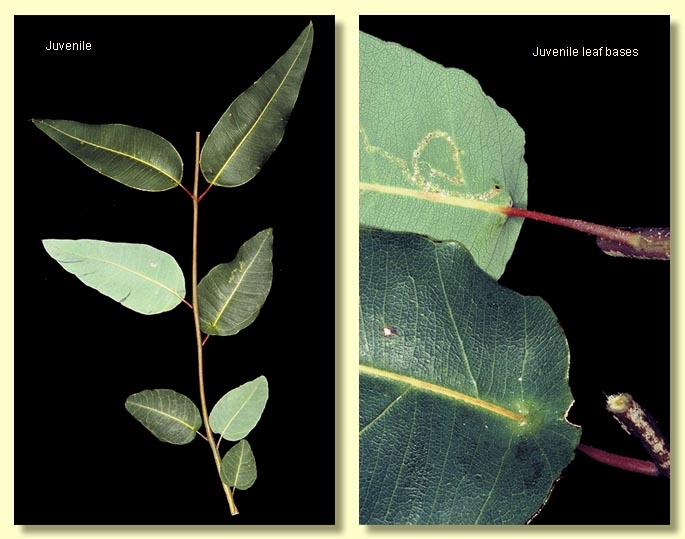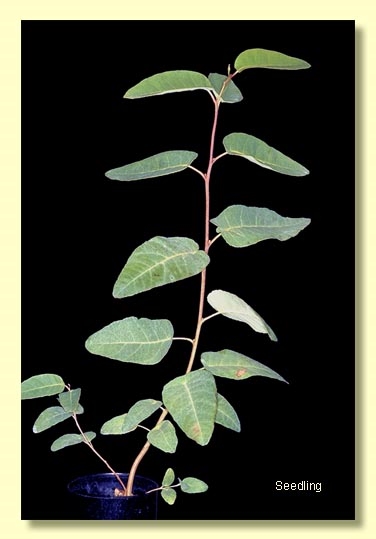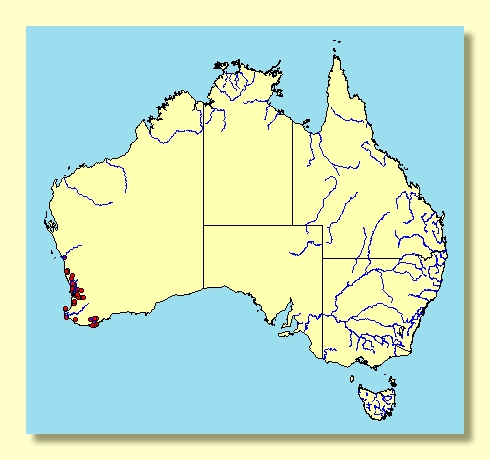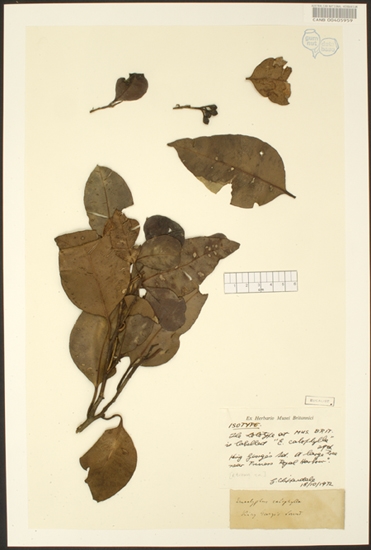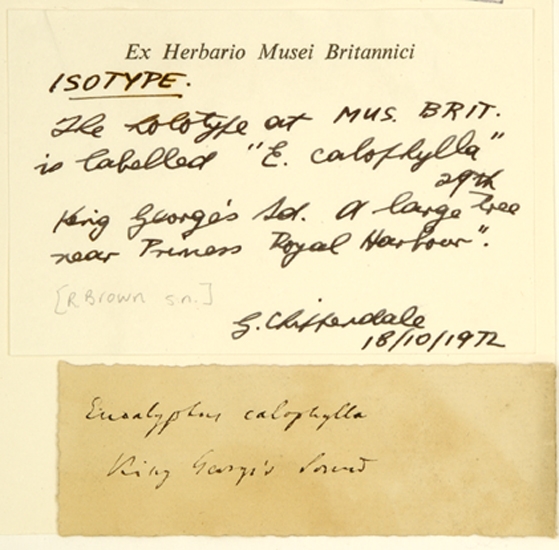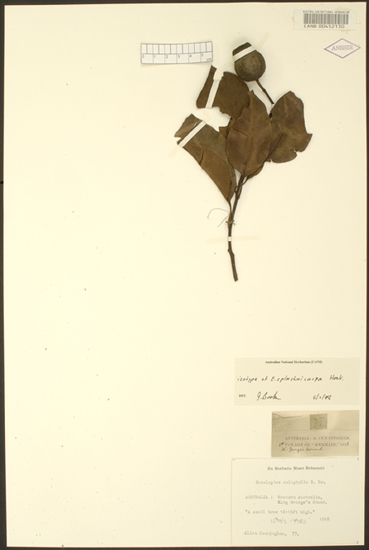Euclid - Online edition
Corymbia calophylla
Corymbia | Rufaria
E. calophylla var. maideniana Hochr., Candollea 2: 463 (1925). T: Western Australia: Darling Range, 16 Feb. 1905, B.P.G.Hochreutiner 2950; holo: G (This specimen was cited by Hochreutiner, but has not been traced subsequently).
E. calophylla var. parviflora Blakely, Key Eucalypts 85 (1934). T: NSW: cultivated Government House, Sydney, 2 Jan 1925, W.F.Blakely s.n.; lecto: NSW [fide K.D.Hill & L.A.S.Johnson, Telopea 6: 240 (1995)].
Usually a tree to 40 m tall, or mallee-like to 5 m on poor sites. Forming a lignotuber.
Bark rough to the small branches, tessellated, brown to grey-brown.
Branchlets lacking oil glands in the pith.
Juvenile growth (coppice or field seedlings to 50 cm): stems round in cross-section, hairy or scabrid to ca node 8; juvenile leaves petiolate, broadly lanceolate to lanceolate, bases peltate on first leaves then round to tapering, alternate, 4.5–24 cm long, 3.5–9 cm wide, margins usually entire, rarely irregular, glossy green. Leaves scabrib, becoming smooth after ca 4–5 nodes.
Adult leaves alternate, petioles 1.5–3.5 cm long; blade ovate to broadly lanceolate to lanceolate, 7–19 cm long, 2–5.5 cm wide, flat to slightly undulate, glossy to slightly glossy, discolorous being darker green above, paler below, base tapering to the petiole, margin entire, apex acute, side-veins penniveined, reticulation dense to very dense, intramarginal vein present but close to the leaf margin, oil glands very numerous and island, usually one oil gland per areole.
Inflorescence terminal compound, peduncles 1.5–3.5 cm long, buds 7 per umbel, pedicels 0.6–3.7 cm long. Mature buds pyriform, 0.6–1.4 cm long, 0.6–1 cm wide, surface smooth (not scurfy), scar absent (both opercula shed together at flowering), operculum flattened, stamens inflexed, anthers oblong, versatile, dorsifixed, dehiscing by longitudinal slits, style long and straight, stigma papillate (mop-like), locules commonly 3 (rarely 4), ovules not in regular rows. Flowers white, rarely pink.
Fruit pedicellate (pedicels 0.7–4 cm long), urceolate, 1.9–4.4(5) cm long, 1.8–4 cm wide, disc vertically descending, valves 3 (rarely 4), deeply enclosed.
Seeds dull to semi-glossy, black, 10–15 mm long, cymbiform (boat-shaped), wing absent, hilum ventral.
Cultivated seedlings (measured at node 10): cotyledons reniform; stems round in cross-section, scabrid to ca node 10; leaves petiolate, opposite for the first 3 nodes then alternate, broadly lanceolate to ovate, 7–12 cm long, 3.3–6 cm wide, dull to slightly glossy green, base peltate to ca the 10 th node then rounded or tapering to the petiole, lamina scabrid till ca node 8.
Flowering has been recorded in January, February, March and September.
Corymbia calophylla has become naturalised in parts of the Lofty Ranges, South Australia.
A medium-sized to tall tree over most of its distribution (a mallee on very infertile sites), occurring widely from near Geraldton to Albany in the well-watered parts of the south-west of Western Australia. Corymbia calophylla is easily recognised by the tessellated, rough bark, strongly discolorous adult leaves (darker on upper side, paler below), terminal inflorescences, white to creamy, rarely pink flowers, very big urceolate, woody fruits and large black seeds.
C. calophylla is one of three species of bloodwood occurring in the south-west of Western Australia. C. calophylla is closely related to C. haematoxylon of much more restricted and disjunct distribution in the south-west of Western Australia, at Mt Lesueur, south from Byford to near Busselton. C. haematoxylon differs by the lower habit, narrower buds and fruit (fruit width usually less than 2.5 cm in C. haematoxylon and more than 2.5 cm in C. calophylla), narrower orifice to the fruit and smaller brown seeds. The third bloodwood within the area of distribution of C. calophylla is C. ficifolia, which is very restricted near Mt Frankland, Walpole, Albany and the Stirling Range. C. ficifolia differs by the flower colour, which ranges from pale orange to deep pink and red, stiffer leaves usually lacking oil glands, and by the winged seeds like those of the bloodwoods of the desert and northern and north-eastern Australia.
C. calophylla is closely related to C. gummifera, which occupies similar sites in coastal eastern Australia, from Brisbane in Queensland to East Gippsland in Victoria, and shares the wingless, boat-shaped seeds.
Pink-flowering marri is rare and has been erroneously thought to be a hybrid with C. ficifolia.
MORE ABOUT CORYMBIA
MORE ABOUT RED BLOODWOODS

